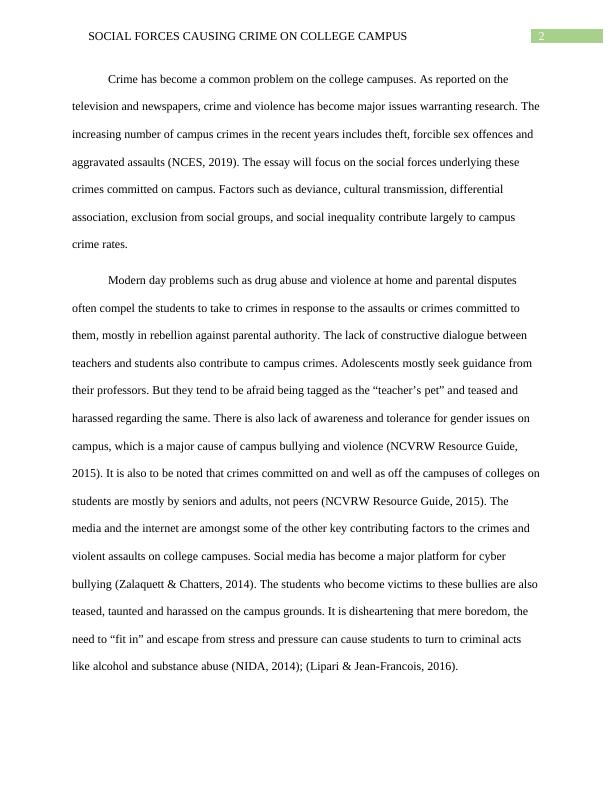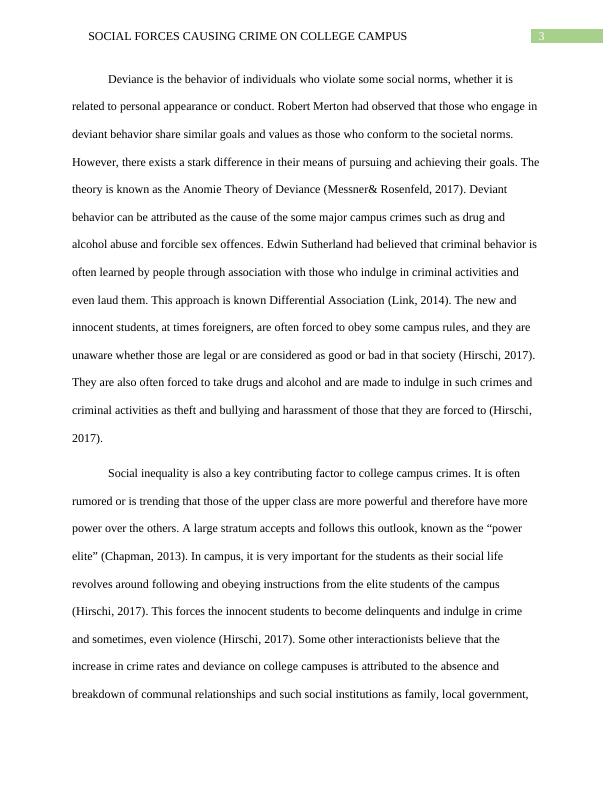Social Forces Causing Crime on College Campus
Exploring the reasons behind the prevalence of crime on college campuses and the social forces that contribute to it.
6 Pages1271 Words100 Views
Added on 2023-03-23
About This Document
Crime has become a common problem on college campuses, with theft, sex offenses, and assaults being major issues. This essay explores the social forces underlying these crimes, including deviance, differential association, and social inequality.
Social Forces Causing Crime on College Campus
Exploring the reasons behind the prevalence of crime on college campuses and the social forces that contribute to it.
Added on 2023-03-23
ShareRelated Documents
End of preview
Want to access all the pages? Upload your documents or become a member.
Criminology: Understanding Sexual Assault Offenses in Canada
|8
|2407
|367
Journal of Contemporary Criminal Justice
|11
|968
|17
Media and Delinquency - Assignment
|9
|2405
|118
Bullying, cyberbullying, and the estranged violent juvenile offender
|5
|1243
|453
Managing Ex-Offenders Threatening Public Officials: Applying Anomie Theory
|9
|3082
|63
Child Abuse and Information Sharing Protocols
|6
|1441
|2



